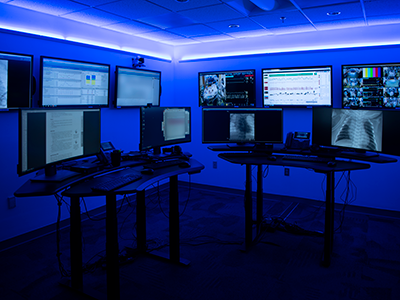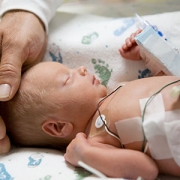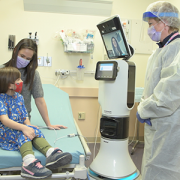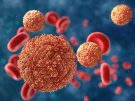Telehealth and AI reduce cardiac arrest in the cardiac ICU

The telehealth command center located a few steps away from the cardiac ICU at Children’s National Hospital.
The cardiac critical care team at Children’s National Hospital has developed an innovative Tele-Cardiac Critical Care model aiming to keep constant watch over the most fragile children with critical heart disease in the cardiac ICU. The system combines traditional remote monitoring and video surveillance with an artificial intelligence algorithm trained to flag early warning signs that a critically ill infant may suffer a serious event like cardiac arrest while recovering from complex cardiac surgery. This second set of eyes helps bedside teams improve patient safety and quality of care.
These high risk post-operative patients are often neonates or small infants born with the most complex and critical congenital heart diseases that require surgery or interventional cardiac catheterization in their first days or weeks of life. At these early stages after crucial cardiac surgery, these patients can decompensate dangerously fast with few outward physical symptoms.
The AI algorithm (T3) monitors miniscule changes in oxygen delivery and identifies any mismatch with a child’s oxygen needs. It also tracks and displays small changes in vital sign trends that could lead to a serious complication. The cardiac ICU command center staff then analyzes additional patient data and alerts the bedside team whenever needed.
The Tele-Cardiac Critical Care program started two years ago. In that time, the program has contributed to a significant decrease in post-operative cardiac arrest for this patient population.
“It’s easy to see how a model like this could be adapted to other critical care scenarios, including our other intensive care units and even to adult units,” says Ricardo Munoz, M.D., chief of Cardiac Critical Care and executive director of Telehealth. It allows the physicians and nurses to keep constant watch over these fragile patients without requiring a physician to monitor every heartbeat in person for every patient at every hour of the day to maintain optimal outcomes for all of them.”
Dr. Munoz and Alejandro Lopez-Magallon, M.D., medical director of Telehealth and cardiac critical care specialist, presented data from the pilot program at the American Telemedicine Association’s virtual Annual Meeting on June 26, 2020.











